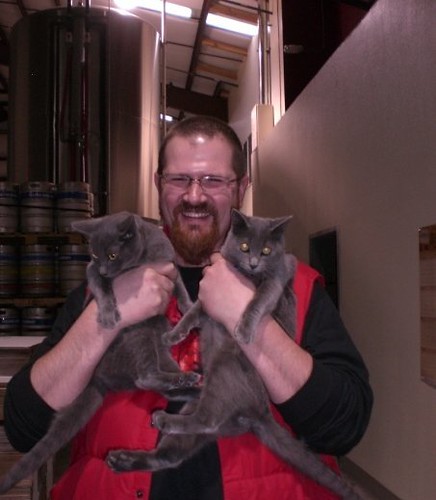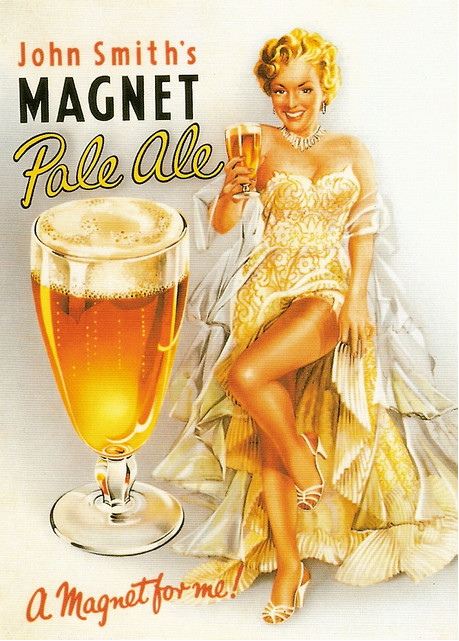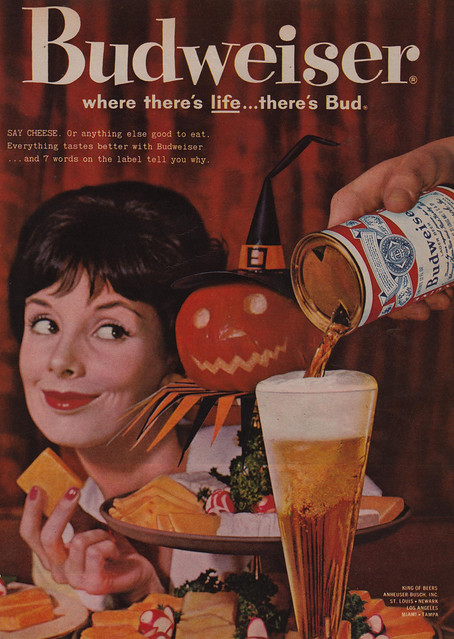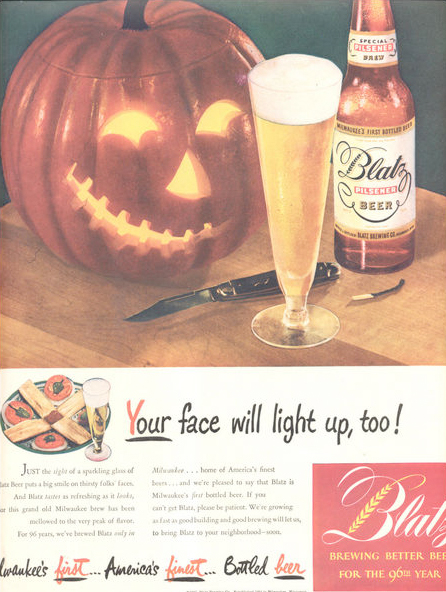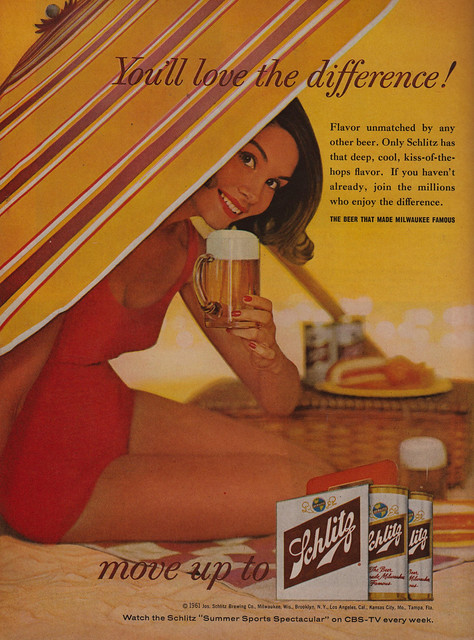
Ugh, why do people keep defending low-calorie light diet beer? It’s an abomination. It should go away. It’s a marketing trick. It’s the best selling kind of beer in America, and defending it is the equivalent of complaining about the “War on Christmas” or the “War on White People.” Yes, sales have been slipping lately, with more people choosing beer with flavor, but certainly not enough to put much of a dent in the sheer volume of this dreck. Yes, many, if not most, craft beer drinkers choose not to drink it and some even bash it as something not worthy of respect. Well, I am one of those people. Not everything deserves our respect. I respect how difficult it is to make, but in the end that’s not the standard I want to use for how I choose what to drink. Degree of difficulty may be fine for Olympic gymnastics or diving, but taste is far more important to me when it comes to my beer.
So please stop telling me I must love it because it’s really, really hard to make. I get that. I marvel at the technology that must be employed, the sacrifice of ingredients to keep it lighter in color and flavor, the loving care taken to make something that … should … not … exist, and would not exist if not for the Herculean effort to make it. It’s unnatural. So why go to such an effort to make something nobody wanted in the first place? Why spend millions of dollars to convince people they should be drinking it? Why create new processes to create Frankenbrew in the laboratory when ordinary beer was perfectly fine, thank you very much? Anyone, anyone? Bueller? Did anyone say “money?” Show ’em what they win. They win a beer landscape dominated by beer that tastes as close to water as technologically possible. Hooray! Drop the balloons, throw the confetti and start the singing and dancing.
Earlier this summer, David Ryder, Vice-President of Brewing for MillerCoors wrote an op-ed piece in the Chicago Sun-Times entitled In Defense of Light Beer, in which he trotted out the old saws about light beer. The fact that the two top-selling products his company makes are Coors Light and Miller Lite should, of course, have made anyone suspicious of his motives and question any arguments in his editorial piece. The fact that the Sun-Times ran such an obviously biased piece is rather sad, I think. It’s a bit like asking Lee Iacocca to defend the Pinto. You can’t expect objectivity.
But now there’s another article telling me I have to respect light beer, this time in a magazine I actually read, and usually enjoy: Mental Floss. The piece, Scientific Reasons to Respect Light Beer is written by Jed Lipinski, who appears to not be a frequent writer about beer, not that that should matter. After a few anecdotes from craft beer fans disparaging light beer, he launches into his defense:
What few drinkers know, however, is that quality light beers are incredibly difficult to brew. The thin flavor means there’s little to mask defects in the more than 800 chemical compounds within. As Kyler Serfass, manager of the home-brew supply shop Brooklyn Homebrew, told me, “Light beer is a brewer’s beer. It may be bland, but it’s really tough to do.” Belgian monks and master brewers around the world marvel at how macro-breweries like Anheuser-Busch InBev and MillerCoors have perfected the process in hundreds of factories, ensuring that every pour from every brewery tastes exactly the same. Staring at a bottle, it’s staggering to consider the effort that goes into producing each ounce of the straw-colored liquid. But perhaps the most impressive thing about light beer isn’t the time needed or the craftsmanship or even the consistency, but how many lives the beverage has saved.
And there’s degree of difficulty again. Is light beer really a “brewer’s beer?” I have to question that one. But even more of a howler is how “Belgian monks and master brewers around the world marvel at how macro-breweries like Anheuser-Busch InBev and MillerCoors have perfected the process.” They may find the technology or the process interesting, they may even be impressed by the effort, but I think you’d be hard-pressed to find a brewing monk who prefers Bud Light to Duvel, or Orval, or Westmalle. Can anyone really think the average German brewer “marvels” at Miller Lite when compared to the average everyday Bavarian beer? Or that the brewers of England think Coors Light better than the average cask hand-pulled from their local pub? In fact, until the rise of low-calorie diet beer, most Europeans, when referring to “light” beer, thought of light in terms of color, as the German helles (which means “bright” or “light”) or hell (an adjective for “light”). Also, he begins by referring to light beer as having “thin flavors.” Since when has that ever been a positive attribute for anything? When is “less flavor” something to strive for? Name another food product where the goal is to create a version with not as much flavor.
But then there’s that last bit, about how light beer has saved lives. Huh? Yeah, that was my response, too. Huh? And here’s the reason.
“Before it was light beer, it was “small beer.” A popular drink in late-medieval Europe and colonial America, small beer was necessary for certain civilizations to grow. In the days before Brita filters, beer staved off disease and dehydration by packing just enough alcohol to kill off pathogens found in drinking water.
Except that it wasn’t. One didn’t evolve into the other, in some natural progression. The two are not the same, apart from both being low-alcohol and beers. He even contradicts himself by saying that it was popular in medieval times and allowed “civilizations to grow.” Given that civilization was around for thousands of years before that period of history and that beer was there at the very dawn of civilization, I think we can safely say that “small beer” didn’t save mankind. Beer generally had a hand in keeping people healthier longer, allowing those with a tolerance for alcohol to prosper and procreate, but it wasn’t “light beer” that saved the day. If those people had to wait around for brewers to figure out they could use the second runnings of their strong beer to make a lower strength beer that they could sell for less, they would not have survived. Small beer was essentially a way to make more money, to re-use part of the brewing waste, first created by English brewers, although most brewing cultures also made a beer of lower strength that was essentially a table beer. Anchor Brewing has continued the English tradition by making a Small Beer from their Old Foghorn Barleywine Style Ale, and despite it being 3.3% a.b.v., it’s about as far from a low-calorie light diet beer as one could be.

Light beer was the brainchild of one man, who thought people would want diet beer. He was wrong, though he did come up with the process of how to make a low-calorie diet beer. Here’s the story, from an earlier post of mine:
The first low-calorie beer was created by Joe Owades, who, it must be said, had some very strong opinions about beer. He once told me that all ale yeast was dead and inferior to lager yeast. Around 1967, he created Gablinger’s diet beer, the first light beer, while working for Rheingold. It flopped. Big time. Not everybody agrees on what happened next. Some accounts credit Owades with sharing his recipe for light beer with Meister Brau of Chicago while others claim that the Peter Hand Brewing Company (which marketed Meister Brau) came up with it independently on their own. However it happened, Meister Brau Lite proved somewhat more successful than Gablinger’s, primarily due to its superior marketing. Miller Brewing later acquired Meister Brau, and in 1975 debuted Miller Lite, complete with the distinctive, trademark-able spelling.
But it took marketing the new low-calorie beer in a new way so that it removed the “diet” stigma to make it work. They had to trick people into drinking it. Miller’s famously successful “tastes great, less filling” campaign was the primary reason for the category’s success. But it was hardly overnight. It took fifteen years — from 1975 to 1990 — for Miller Lite to reach 10% of the market. Over that time, the other big brewers (loathe to miss out on any market share) introduced their own versions, such as Coors Light and Bud Light, so that whole segment of low-calorie beer was nearly 30% of the beer market by 1990.
Today, seven of the top ten big brands are light beers. Despite its recent dip in sales, it remains a $50 billion segment of the business and still hovers close to half of all beer sold in the United States. That fact, I find to be incredibly sad, frankly. What a great triumph of marketing over common sense and actual taste.
Which is why I hardly think anyone needs to be rushing to its defense. People are willingly drinking it in frighteningly high numbers. I can only assume they’re the same people who buy Wonder Bread, Kraft cheese, TV dinners and every other popular product, even when everybody knows better, healthier, tastier alternatives are available.
Owades supposedly saw the focus group data indicating that people were giving up beer to save calories. Remember, this was the 1950s. Of course, it seems to me the smarter decision would have been to persuade people that beer is not as fattening as they thought. That this is true means it probably would have been a much easier sell. The idea that beer is so fattening is something of a myth, just like the beer belly. It seems to me that if the beer companies at that time had thrown their millions of ad dollars into that message, things might be a lot better today. But they chose the harder path, one we’re all still paying for. Instead of changing the message, they went with “the customer is always right” approach and created a beer to satisfy the consumer’s misconceptions and incorrect assumptions. In other words, when the customer was wrong, they just went with it. When it tanked, instead of cutting their losses, they instead spent millions persuading customers something that wasn’t true; that beer was fattening, but drinking this “magic diet beer” would fix that. The first thing they learned was not to call it “diet beer.” It’s what pharmaceutical companies have learned how to do so well. They first come up with the drug, then create the condition it will cure, even if it didn’t exist before. Anybody remember “restless leg syndrome” before the drug that treats it came on the market?
Lipinski goes on to detail the technology and the steps in the process that big breweries take to create low-calorie diet beer. And even he admits it was a tough sell at the beginning, and how a barrage of advertising was necessary to make it succeed. So tell me again why I have to respect something that had to be sold to the American people through advertising and marketing and which would probably not exist had that advertising failed? If those ads had not worked, low-calorie diet beer could have just as easily ended up on the scrap heap with dry beer, ice beer or tequila-flavored beer.
Peter Kraemer, a VP at ABI, seems to believe part of the problem is with definitions. He claims that “‘light beer’ has lost all meaning over the years” and he “considers [regular Budweiser and Bud Light] both light beers.” In that, he may be on to something. Regular Bud and Bud Light were once judged at GABF as separate categories, but today are sub-categories under the umbrella “American-Style Lager, Light Lager or Premium Lager,” a category I judged a first round of this year. Indeed, even the technical differences in the four sub-categories are slight. I suspect that they may have been more different at one time, but as Anheuser-Busch finally revealed in a 2006 Wall Street Journal article, Budweiser Admits Flavor “Drifted” Over the Years. So regular Bud has been slowly “creeping” closer to Bud Light over the years. But the fact is they taste pretty similar, have not much difference in terms of calories and are separated only in the way they’re marketed. They remind me of the choice between 87 regular octane gasoline and 91 premium octane. I’m told they’re not the same gasoline but damned if it makes any difference to my car, and I’ve long suspected that it’s like an old Dave Berg cartoon I saw in Mad magazine where all the gas actually comes out of one big tank below the pumps, and really is all the same.
And why not, the driving force in these changes is being able to use less ingredients, making the profits higher. It’s not rocket science. Use less malt and hops, and it will cost less to produce the beer, all other costs being equal. Over a small batch or two, it’s probably not that much, but in vats the size of Montana, it makes a big difference to the bottom line. And that’s plenty of incentive to spend the ad dollars to convince people that the flavor you’re not tasting is what you really want, because it’s better for you, won’t fill you up and, besides, it still tastes great. Trust us.
The other reason, or incentive, that the big brewers have for light beer is that having convinced people that they have less calories, people feel that they can actually drink more of them. And that’s what they end up doing. So by promoting them as healthier, diet beer, people end up actually drinking more calories. As The Litigation Consulting Report explains, in order to get the same buzz, that is the same amount of alcohol (which is also lower in most light beers), you’d have to drink 15 light beers to get the same alcohol that’s in six regular beers. According to them, this is known as the “compensation” effect and “is an issue in some product liability cases.”

But the diet aspects of beer already work for all beer, no reason to even sacrifice the flavor between the two. But since they’re admittedly both the same, you may as well avoid both regular and the diet versions in favor of something with actual flavor. That’s one of the biggest reasons I hate low-calorie diet beer: there’s simply no reason for it to exist. For most beers, have two instead of three and you’ll be ahead of the game. Drink smarter, drink better.
I realize I’m in the minority here, as every time I write about counting calories, people comment that they do actually watch their caloric intake, but I do not, and never have. I’ve gone over 50 years without counting a single calorie and, while I may not be the world’s healthiest man, I’m not the world’s worst either. And I’ve certainly never regretted choosing to eat or drink whatever I want. I find the slavish obsession to calorie counting absurd, but have come to recognize that many people really do care about them. I’ve written about this issue before, in Calories In Beer: Can We Please Stop?, Calories In Beer: Can We Please Stop, Part 2 and Read This, Not That. Life is undoubtedly about making choices, assessing risks and deciding what’s best for you.
Still, if you love beer, why defend low-calorie diet beer that is in every way as far from actual beer as possible? Everyone acknowledges it has less flavor. It has a few less calories, but stripping calories also strips … wait for it … flavor. But the difference between regular and diet beer seems so slight to me to be almost meaningless, especially when simply drinking one less beer would have roughly the same effect. If Budweiser has 145 calories in a 12 oz. bottle, and Bud Light has 110, drinking three diet beers would save you 105 calories. But have just two Buds, and you’d save 40 calories over three Bud Lights. Better still, choose two Samuel Adams Boston Lagers (160 calories) and you’d still save 10 calories over three Bud Lights or choose two Sierra Nevada Pale Ales (175 calories) and it will cost you only 20 more calories than drinking three Bud Lights would, though you’d still save 85 calories drinking two Sierra Nevada Pale Ales instead of three regular Budweisers. The point is that the caloric savings in diet beers are a sham. The differences are too slight to sacrifice so much flavor and enjoyment.

To sum up, diet beers were created in a laboratory to fill a need that didn’t exist. Making the beer that nobody wanted is incredibly difficult, and much harder than just making normal beer. To be successful, millions of dollars had to be spent on marketing and advertising to convince people to buy the thing that’s harder to make that they didn’t want in the first place. Finally, after nearly 40 years, and at least 20 that they’ve dominated the market, sales are starting to slip as people are choosing beer with more flavor instead. But rather than follow the shifting marketplace, pleas are being made that we should respect the beer nobody wanted that’s harder to make because … well, just because it is so danged hard to make and is a technological marvel deserving our respect.
As Lipinski wittily remarks in his closing sentence, he hopes his efforts at persuading you to respect light beer will “help you see the brew in a new light,” but there’s really nothing new in his arguments. His “scientific reasons” can only command your respect up to a point. I can respect the process, I can respect the technology, I can respect the effort made, but I still can’t respect the results. I honestly don’t understand how anyone can, quite frankly. With no disrespect to the many wonderful brewers who make low-calorie light diet beer, you can do better. You know you can. I have no truck with your skill as brewers or with the technology you wield so impressively. But I want a beer with more flavor. So until diet beer, like so many other diet products, tastes exactly the same as the more flavorful beers I prefer, I can’t give it the respect you insist it deserves.




